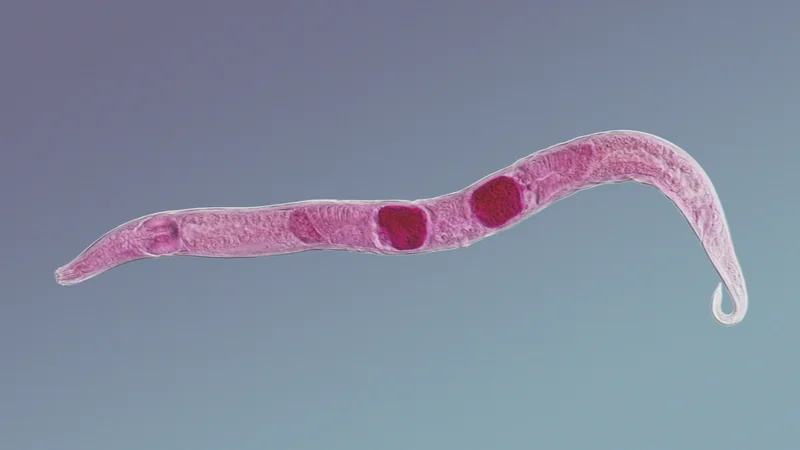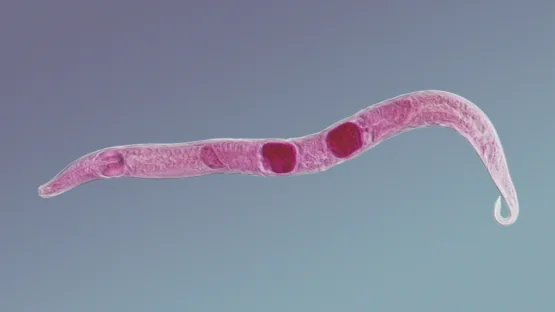A study published in Redox Biology has reported that the upregulation of thioredoxin, a fundamental part of mitochondrial defense against reactive oxygen species, is associated with longevity in mutant C. elegans worms.
Free radicals, revisited
The free radical theory of aging, which focuses on reactive oxygen species (ROS), is largely considered to be largely outdated and superseded by more comprehensive theories. However, free radicals are still known to have a strong effect, especially in simpler model organisms, and the relationship between ROS and mitochondrial dysfunction has been heavily researched [1].
One way in which researchers have slowed aging in model organisms also involves slowing their development in a “live slow, die old” fashion. Deliberately impairing mitochondrial function slows the growth of these organisms but also slows the rate at which they accumulate damage, thus leading to longer lifespans [2].
Interestingly, some mutations that increase ROS also increase longevity, as the increased ROS leads to an increased response against it, which more than makes up for the damage [3]. One of the responses in one of these mutants involves the upregulation of thioredoxin, a fundamental part of the mitochondrial defense against ROS [4].
Effects and lacks thereof
After winnowing down the candidates for gene expression, the researchers focused their efforts on two mutants, nuo-6 and isp-1, along with thioredoxin expressed in the mitochondria (trx-2) and its counterpart, thioredoxin reductase (trxr-2). The researchers also examined similar genes that are expressed by the nucleus, notably trx-1 and trxr-1.
Disrupting any of the trx family of genes, as expected, increases ROS in both mutants and wild-type worms. However, most of the lifespan effects are restricted only to the mutants in which these genes are upregulated. Knocking out the nuclear trx-1 significantly harmed all the worms under normal circumstances, but knocking out trx-2 and trxr-2 only significantly decreased lifespan in the mutant worms, showing that these mutants’ longevity largely relies on the upregulation of their mitochondrial thioredoxin genes.
However, while knocking out the trx-2 and trxr-2 genes had no significant lifespan effect in wild-type worms under any circumstances, and knocking out trxr-1 and trxr-2 actually increased lifespan in wild-type worms exposed to the herbicide paraquat, knocking out trx-1 and trxr-1 significantly decreased lifespan in mutants and wild-type worms exposed to excessive heat and salty water.
Conclusion
The biochemistry of free radicals is complicated and, at times, contradictory. This research recapitulates the known fact that some antioxidants, such as thioredoxin, are naturally increased to compensate for an increase in ROS.
The lack of effect of mitochondrial thioredoxin knockout in wild-type worms under normal circumstances has worrying implications for anyone intending to research it as a longevity drug. However, the research does elucidate situations in which this compound has a significant effect on lifespan.
It may make more sense, then, to conduct research into whether thioredoxin, and antioxidants more generally, are better suited to being situational interventions against specific stressors rather than broad-spectrum life extension drugs.
Literature
[1] Shields, H. J., Traa, A., & Van Raamsdonk, J. M. (2021). Beneficial and detrimental effects of reactive oxygen species on lifespan: A comprehensive review of comparative and experimental studies. Frontiers in Cell and Developmental Biology, 9, 181.
[2] Dillin, A., Hsu, A. L., Arantes-Oliveira, N., Lehrer-Graiwer, J., Hsin, H., Fraser, A. G., … & Kenyon, C. (2002). Rates of behavior and aging specified by mitochondrial function during development. Science, 298(5602), 2398-2401.
[3] Senchuk, M. M., Dues, D. J., Schaar, C. E., Johnson, B. K., Madaj, Z. B., Bowman, M. J., … & Van Raamsdonk, J. M. (2018). Activation of DAF-16/FOXO by reactive oxygen species contributes to longevity in long-lived mitochondrial mutants in Caenorhabditis elegans. PLoS Genetics, 14(3), e1007268.
[4] Dues, D. J., Schaar, C. E., Johnson, B. K., Bowman, M. J., Winn, M. E., Senchuk, M. M., & Van Raamsdonk, J. M. (2017). Uncoupling of oxidative stress resistance and lifespan in long-lived isp-1 mitochondrial mutants in Caenorhabditis elegans. Free Radical Biology and Medicine, 108, 362-373.




